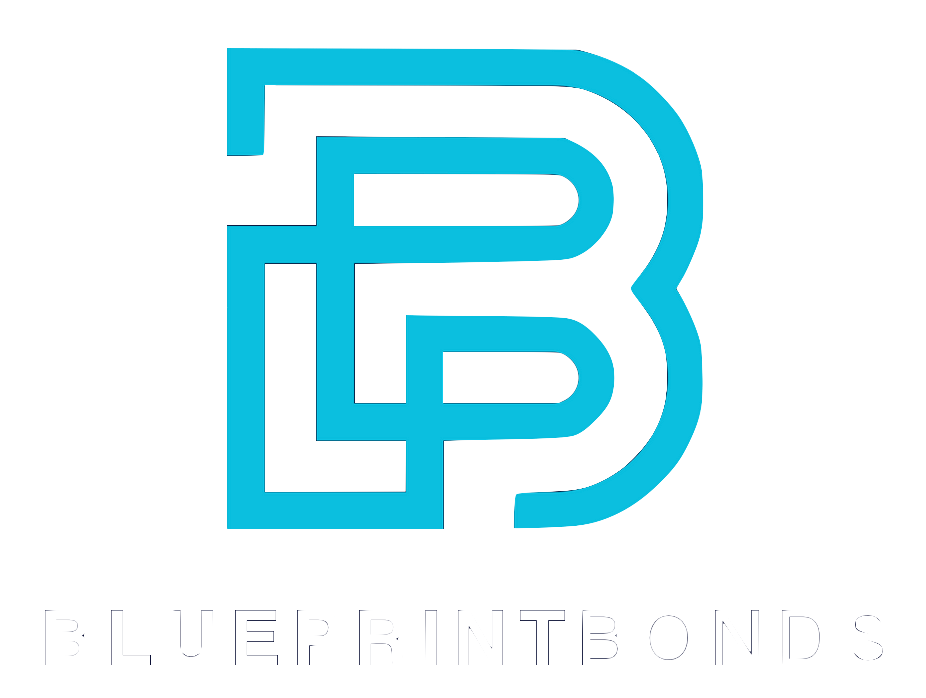In the realm of real estate development, understanding the financial mechanisms that support and regulate projects is crucial. One such mechanism is the Indiana subdivision bond. This article delves into the intricacies of subdivision bonds in Indiana, explaining their purpose, requirements, and implications for developers and local governments alike.
What is an Indiana Subdivision Bond?
An Indiana subdivision bond is a type of surety bond that developers must obtain to ensure that they will complete the necessary improvements in a subdivision, such as roads, utilities, and other infrastructure. This bond acts as a financial guarantee to the local government that the developer will fulfill their obligations as outlined in the subdivision agreement.
Essentially, the bond protects the interests of the community and local government by providing a source of funds to complete the improvements should the developer fail to do so. This safeguard is particularly important in areas experiencing rapid growth, where infrastructure development must keep pace with new housing projects. As urban areas expand and new neighborhoods emerge, the demand for reliable infrastructure—such as water lines, sewage systems, and roadways—becomes increasingly critical to support the influx of residents and businesses.
Purpose of the Bond
The primary purpose of the Indiana subdivision bond is to ensure that developers adhere to the commitments made in their development plans. By securing a bond, developers demonstrate their financial responsibility and commitment to completing the project according to local regulations.
Moreover, the bond serves as a safety net for local governments, ensuring that taxpayers are not left to cover the costs of unfinished infrastructure. If a developer defaults on their obligations, the local government can use the bond funds to complete the necessary work, thereby protecting the community's interests. This mechanism not only fosters trust between developers and local authorities but also encourages responsible development practices, as developers are aware that failing to meet their obligations can have financial repercussions. Additionally, the bond can help streamline the approval process for new developments, as local governments may be more inclined to approve projects when they have the assurance that infrastructure will be completed on time and to standard.

Who Needs a Subdivision Bond?
Typically, any developer planning to create a new subdivision in Indiana will need to obtain a subdivision bond. This requirement applies to both residential and commercial developments. Local governments often mandate the bond as part of the approval process for subdivision plans.
Developers must be aware of the specific regulations and requirements set forth by the local municipality where the development will take place. Each city or county may have different criteria, so it is essential for developers to conduct thorough research and engage with local officials early in the planning process. Understanding the nuances of local ordinances can save developers significant time and resources, as non-compliance can lead to delays or even project cancellations. Additionally, establishing a good rapport with local authorities can facilitate smoother approvals and foster a collaborative environment for future projects.
Types of Developers
Subdivision bonds are required for various types of developers, including:
- Residential developers constructing single-family homes or multi-family units.
- Commercial developers planning shopping centers, office buildings, or mixed-use developments.
- Public entities developing community infrastructure projects.
In the realm of residential development, builders often face unique challenges such as zoning regulations, environmental assessments, and community impact studies that must be addressed before construction can commence. For commercial developers, the stakes can be even higher, as they typically invest larger sums of capital and may need to navigate complex financing structures. Public entities, on the other hand, often have the added responsibility of ensuring that their projects meet the needs of the community while adhering to strict governmental standards. Each type of developer must not only secure a subdivision bond but also consider how their project will integrate with existing infrastructure and contribute to the overall growth of the area.
Moreover, the process of obtaining a subdivision bond can vary significantly depending on the scope and scale of the project. Smaller developments might find the process relatively straightforward, while larger projects may require extensive documentation and a more rigorous review process. Developers should also be prepared for potential public hearings or community meetings, where local residents may voice their opinions or concerns regarding the proposed development. Engaging with the community early on can help mitigate opposition and foster a sense of investment in the project, ultimately leading to a more successful development outcome.
How to Obtain an Indiana Subdivision Bond
Obtaining a subdivision bond in Indiana involves several steps. Developers must navigate the bonding process carefully to ensure compliance with local regulations and requirements.
Step-by-Step Process
- Research Local Requirements: Begin by consulting with the local planning department to understand the specific bonding requirements for your subdivision.
- Choose a Bonding Company: Select a reputable surety company that specializes in subdivision bonds. It is advisable to work with a company familiar with Indiana's regulations.
- Submit Required Documentation: Provide the bonding company with necessary documents, including project plans, cost estimates, and any other information required for underwriting.
- Underwriting Process: The surety company will evaluate the developer's financial stability and project feasibility. This may involve a review of credit history and financial statements.
- Bond Issuance: Once approved, the bonding company will issue the subdivision bond, which the developer must submit to the local government.
In addition to these steps, it is crucial for developers to maintain open communication with local officials throughout the process. Engaging with the community can provide valuable insights into any potential concerns or additional requirements that may arise. Developers should also be prepared to address any questions or feedback from the planning department, as this can facilitate a smoother approval process.
Moreover, understanding the financial implications of the subdivision bond is essential. The bond amount is typically determined based on the estimated costs of completing the subdivision improvements, such as roads, utilities, and landscaping. Developers should conduct a thorough cost analysis to ensure that the bond amount accurately reflects the project's needs. This not only helps in securing the bond but also ensures that funds are available for the timely completion of the project, thereby fostering trust and reliability with both the local government and future homeowners.
Cost of a Subdivision Bond
The cost of an Indiana subdivision bond can vary significantly based on several factors, including the size and scope of the project, the developer's creditworthiness, and the bonding company's rates. Typically, the bond premium ranges from 1% to 3% of the total bond amount.
For example, if a developer is required to secure a bond for $500,000, the premium could range from $5,000 to $15,000. Developers with strong financial backgrounds may qualify for lower rates, while those with less favorable credit histories may face higher premiums.
Factors Influencing Cost
Several factors can influence the cost of a subdivision bond:
- Project Size: Larger projects often require higher bond amounts, which can increase the premium.
- Developer's Credit Score: A higher credit score typically results in lower bond premiums, as it indicates financial stability.
- Bonding Company Policies: Different surety companies have varying underwriting criteria and pricing structures.
In addition to these primary factors, the location of the subdivision can also play a crucial role in determining the bond cost. Areas with higher construction risks, such as those prone to severe weather or geological issues, may lead to increased bond premiums due to the perceived risk involved. Furthermore, the local regulatory environment can affect the bonding process; jurisdictions with stricter requirements may necessitate higher bond amounts to ensure compliance with local laws and regulations.
Another important consideration is the type of bond required. There are different types of subdivision bonds, such as performance bonds and maintenance bonds, each serving a distinct purpose and potentially influencing the overall cost. Performance bonds guarantee that the developer will complete the project according to the agreed-upon specifications, while maintenance bonds ensure that any defects or issues arising after project completion will be addressed. Understanding the specific requirements for each type of bond can help developers better anticipate costs and secure the necessary financing for their projects.

Legal Implications of Subdivision Bonds
Understanding the legal implications of subdivision bonds is essential for developers. These bonds are legally binding agreements that hold developers accountable for completing their obligations. Failure to comply with the terms of the bond can result in significant financial penalties and legal repercussions. The importance of these bonds cannot be overstated, as they serve as a form of insurance for municipalities, ensuring that public infrastructure and amenities are completed in a timely manner. This is particularly critical in areas experiencing rapid growth, where the timely development of roads, utilities, and other essential services is necessary to support new residents.
Enforcement and Claims
If a developer fails to complete the required improvements, the local government can file a claim against the bond. This process typically involves notifying the bonding company and providing evidence of the developer's default. The bonding company will then investigate the claim and, if valid, disburse funds to cover the costs of completing the necessary work. This mechanism not only protects the interests of the community but also ensures that developers remain diligent in their commitments, as the repercussions of default can extend beyond financial loss to reputational damage within the industry.
It is crucial for developers to understand that claims against a subdivision bond can negatively impact their credit and future bonding capabilities. Therefore, maintaining open communication with local authorities and fulfilling project obligations is essential. Additionally, developers should be proactive in managing their projects, which includes regular updates to stakeholders and addressing any potential issues before they escalate. By fostering a collaborative relationship with local governments and adhering to the stipulated timelines and quality standards, developers can safeguard their financial interests and enhance their standing in the community. This proactive approach not only minimizes the risk of claims but also positions developers as reliable partners in the growth and development of the area.
Benefits of Indiana Subdivision Bonds
Subdivision bonds offer numerous benefits to both developers and local governments. Understanding these advantages can help stakeholders appreciate the role of bonds in the development process.
For Developers
For developers, obtaining a subdivision bond can enhance credibility and demonstrate financial responsibility. It allows them to secure necessary permits and approvals, facilitating project progress.
Additionally, having a bond in place can help developers avoid potential disputes with local governments, as it provides a clear framework for accountability. This proactive approach can foster positive relationships with local officials and the community. Furthermore, subdivision bonds can also serve as a marketing tool, showcasing a developer's commitment to quality and reliability. By presenting a bond, developers can instill confidence in potential buyers and investors, which can lead to quicker sales and a stronger market presence.
For Local Governments
Local governments benefit from subdivision bonds by ensuring that developers are held accountable for their commitments. This financial assurance protects taxpayers from bearing the costs of incomplete infrastructure projects.
Moreover, bonds encourage developers to adhere to local regulations and standards, ultimately leading to higher-quality developments that enhance the community's overall infrastructure and livability. In addition, the presence of subdivision bonds can streamline the approval process for new projects, as local governments can feel more secure in their investments. This can lead to a more efficient allocation of resources and a focus on sustainable development practices. By fostering a collaborative environment between developers and local authorities, subdivision bonds can contribute to a more vibrant and well-planned community, benefiting residents for years to come.
Common Challenges in the Bonding Process
While the process of obtaining a subdivision bond can be straightforward, developers may encounter several challenges along the way. Being aware of these potential hurdles can help streamline the bonding process.
Understanding Local Regulations
One of the most significant challenges developers face is navigating the complex landscape of local regulations. Each municipality may have different bonding requirements, which can lead to confusion and delays in the approval process.
To mitigate this challenge, developers should engage with local planning departments early in the process. Establishing clear lines of communication can help clarify requirements and ensure compliance, preventing potential roadblocks down the line. Additionally, developers may benefit from attending local government meetings or workshops that focus on zoning and bonding issues. These events can provide valuable insights into the expectations of local officials and the community, as well as offer networking opportunities that could facilitate smoother interactions during the bonding process.
Financial Assessment and Underwriting
The underwriting process can also pose challenges for developers, particularly those with less-than-ideal credit histories. Surety companies conduct thorough assessments of a developer's financial stability, which can result in higher premiums or even denial of the bond.
To improve the chances of securing a bond, developers should prepare comprehensive financial documentation and consider working with a financial advisor to strengthen their applications. Demonstrating a solid financial track record can significantly enhance the likelihood of bond approval. Furthermore, developers should be proactive in addressing any potential red flags in their financial history, such as outstanding debts or previous project delays, by providing explanations or evidence of remedial actions taken. This transparency can build trust with surety companies and may lead to more favorable terms in the bonding process.
Conclusion
Indiana subdivision bonds play a vital role in the development process, providing financial assurance that developers will complete their obligations to the community. Understanding the purpose, requirements, and implications of these bonds is essential for developers and local governments alike.
By navigating the bonding process with diligence and clarity, developers can ensure successful project completion while fostering positive relationships with local authorities. Ultimately, subdivision bonds contribute to the growth and sustainability of communities across Indiana, paving the way for responsible development and enhanced infrastructure.
As the demand for housing and commercial space continues to rise, the importance of subdivision bonds will only grow. Developers must stay informed about the evolving landscape of regulations and best practices to thrive in this competitive environment.
Article By: Ryan Spalding
Licensed Insurance Agent & Bond Specialist
Contact Us

